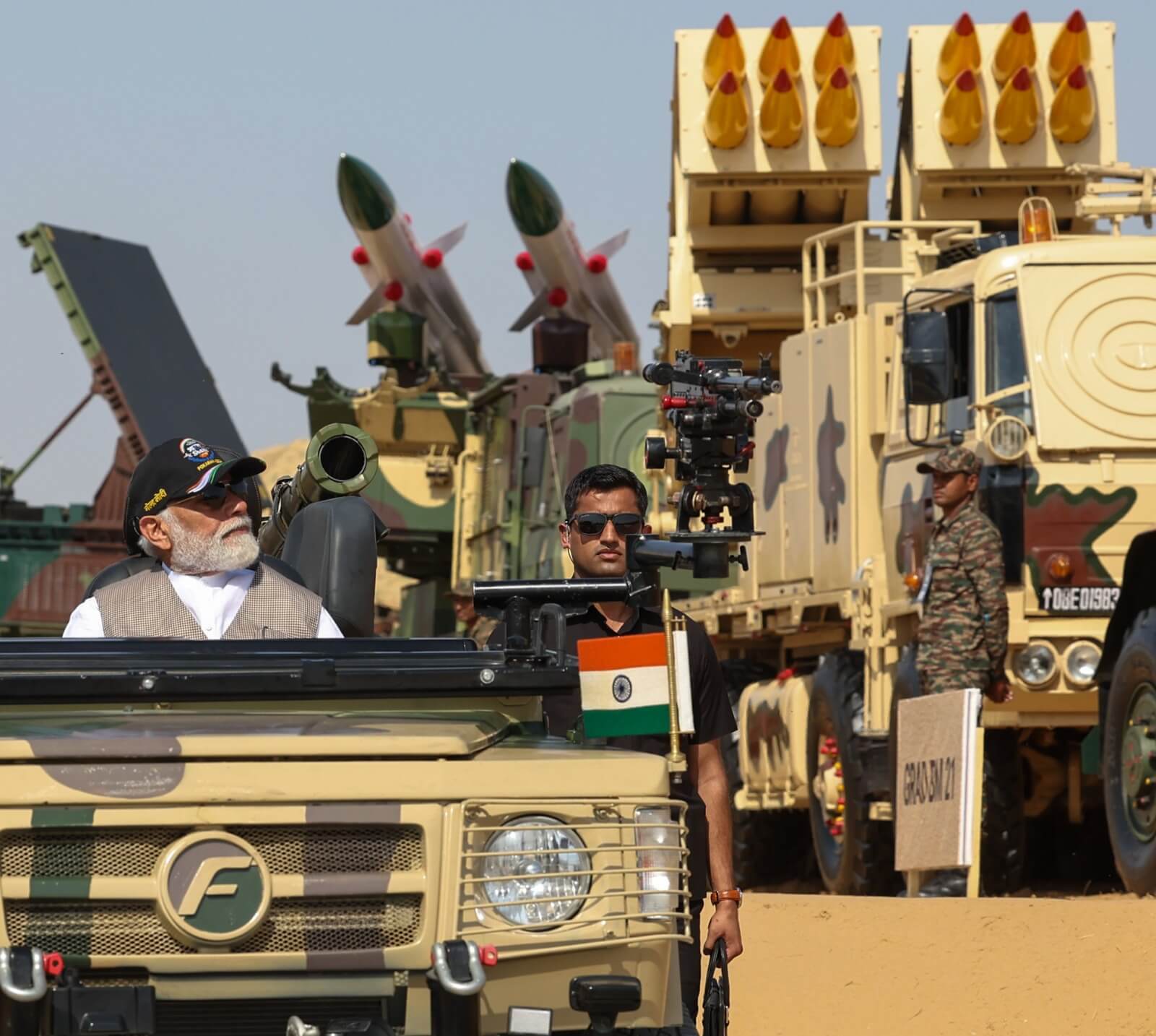On Tuesday, Indian PM Narendra Modi said that “Aatmanirbharta (Self-Reliance) for India’s defence needs is the guarantee of self-confidence in the armed forces.” He made the comments during the ‘Bharat Shakti’ Tri-Services exercise in Pokhran, Rajasthan, which was held to display the power of indigenously manufactured defence equipment.
Developed India, Self-Reliant India
Modi highlighted the significance of Pokhran, noting its history as the site of India's past nuclear tests, and emphasised that the current event showcased the country's progress in self-reliance and strength through indigenous efforts. Praising Pokhran, he underscored its role in embodying India's self-reliance, self-confidence, and glory.
Highlights from ‘Bharat Shakti’ in Pokhran. We will keep working towards making India self reliant in the defence sector. pic.twitter.com/Ui2SI6KhhI
— Narendra Modi (@narendramodi) March 13, 2024
“The idea of Viksit Bharat (Developed India) is Aatmanirbhar Bharat (Self-Reliant India),” he said, underscoring the need to reduce dependence on others. The PM mentioned that India’s independence in defence can be seen in its tanks, cannons, fighter jets, helicopters, and missile systems.
“We are experiencing the flight of Made in India with arms and ammunition, communication devices, cyber and space. This is indeed Bharat Shakti,” Modi remarked. The PM highlighted India’s steps to self-regulate in the defence sector and discussed policy reforms and the inclusion of the private sector in the field.
Bharat Shakti Exercise
Bharat Shakti was the first-of-its-kind exercise and lasted over 50 minutes. It displayed the firepower capability of indigenous weapons and the operational capabilities of the Army, Air Force, and Navy.
T-90 (IM) tanks, Dhanush and Sarang gun systems, Akash weapons systems, logistics drones, robotic mules, Advanced Light Helicopter (ALH), and a variety of uncrewed aerial vehicles from the Indian Army took part in the exercise. The Indian Navy demonstrated its technological and maritime might with the display of naval anti-ship missiles, autonomous cargo-carrying aerial vehicles, and expendable aerial targets. Additionally, the Indian Air Force showcased its air superiority and agility in air operations by deploying light combat aircraft Tejas, light utility helicopters, and advanced light helicopters, all of which were produced in-country.
Glad to have witnessed ‘Bharat Shakti’ in Pokhran. Here are some glimpses from there... pic.twitter.com/0Zyu3F2MDL
— Narendra Modi (@narendramodi) March 12, 2024
“The program exemplifies the nation’s strong strides towards Aatmanirbharta in defence,” the defence ministry stated. Defence Minister Rajnath Singh, Chief of Defence Staff Gen. Anil Chauhan, Chief of Army Staff Gen. Manoj Pandey, Chief of Air Force Staff Air Chief Marshal Vivke Ram Chaudhari and Chief of Naval Staff Admiral R. Hari Kumar were present on the occasion. Delegates from over 30 countries also witnessed the exercise.
India World’s Largest Defence Importer
Modi’s remarks came as India joined a select group of countries with the MIRV (Multiple Independently Targetable Re-entry Vehicle) technology that enables multiple warheads to be loaded on a single missile delivery system. Recently, under Mission Divyastra, the Defence Research and Development Organisation (DRDO) carried out the first successful flight test of the indigenously developed Agni-5 missile.
Modi underscored India's transformation into a defence exporter, noting an eight-fold increase in the nation's defence exports since 2014. He reminisced about a time when India was the world's leading importer of defence equipment. However, a recent Stockholm International Peace Research Institute (SIPRI) report mentioned that India continues to be the world’s top arms importer, accounting for 9.8% of global arms sales.
India Remains World's Largest Arms Importer: Report
— The Wire (@thewire_in) March 12, 2024
Notably, despite the Narendra Modi government’s thrust on building a strong defence-industrial base, India does not figure among the top 25 arms exporting countries.#Securityhttps://t.co/pKVc8dy2cg
Despite the government’s thrust on “Make in India,” India saw 11% of the global arms sales between 2018-22 and 9.8% in 2019-23. Saudi Arabia (8.4%), Qatar (7.6%), Ukraine (4.9%), Pakistan (4.3%), Japan (4.1%), Egypt (4%), Australia (3.7%), South Korea (3.1%) and China (2.9%) follow India among the top 10 arms importers. India does not figure among the top 25 arms-exporting countries.
Russia, France, and the US are among India’s leading arms suppliers. The shift from Russia shows India’s diverse resources to fulfil its defence needs.

